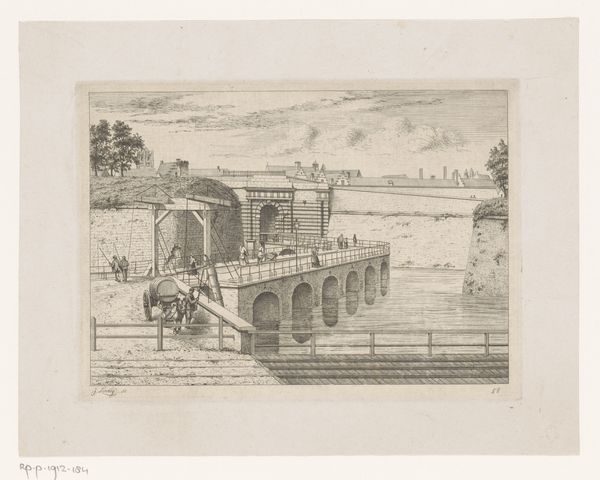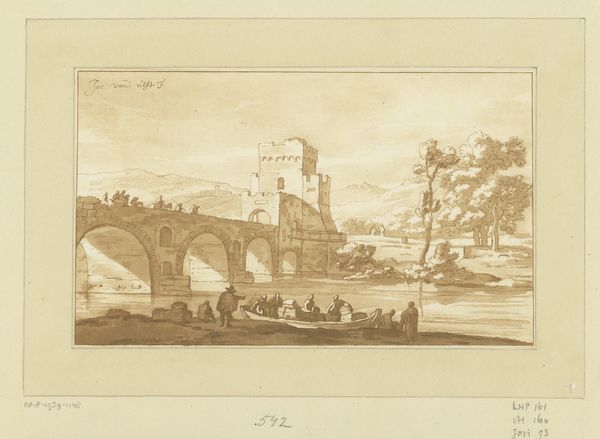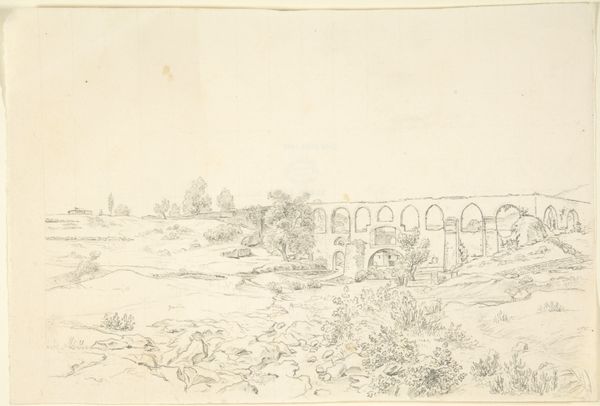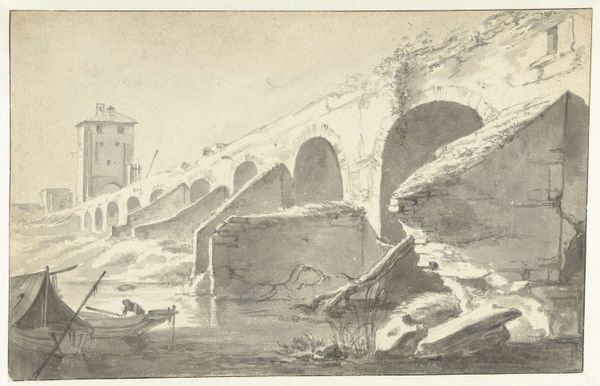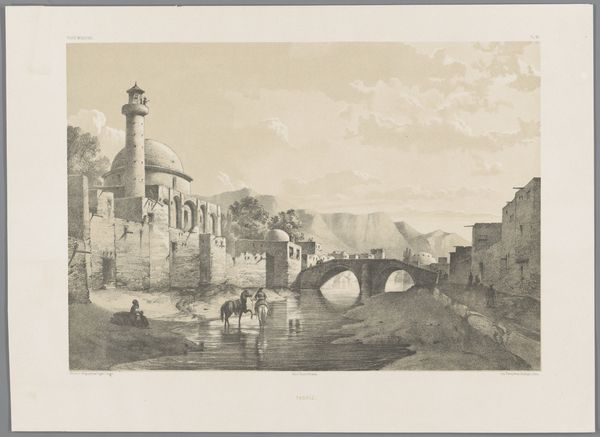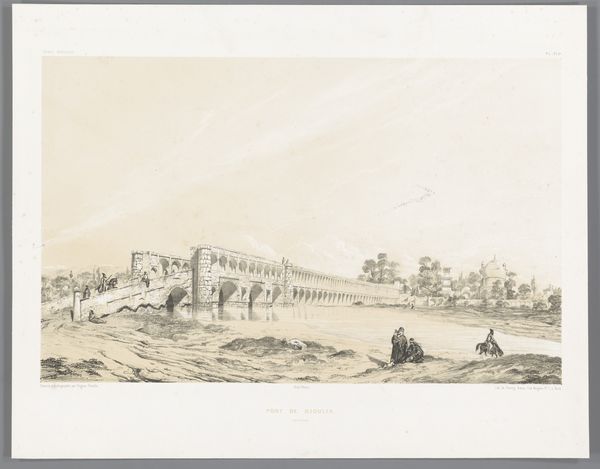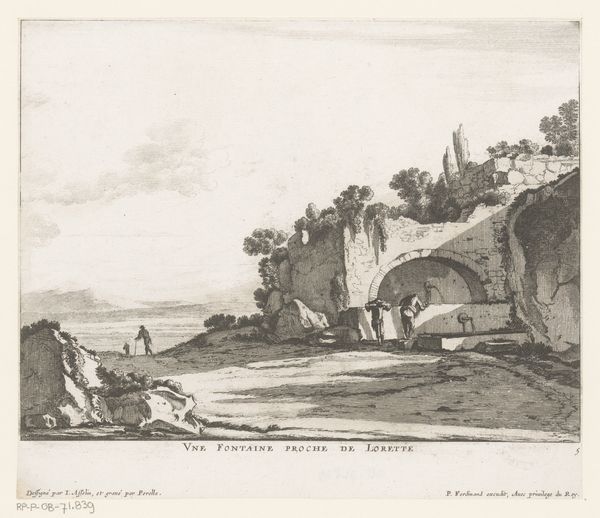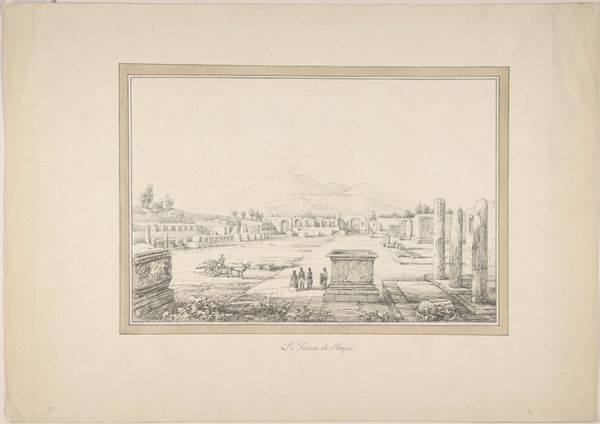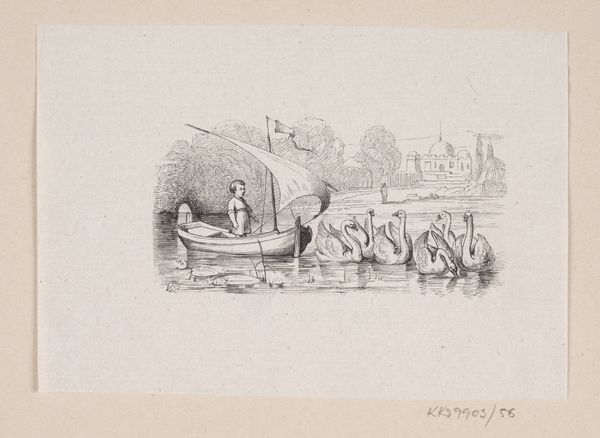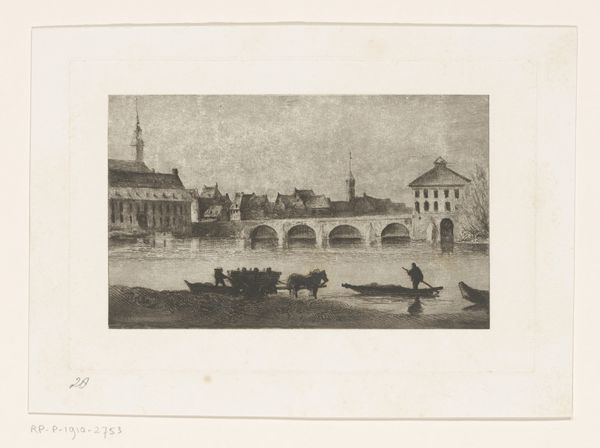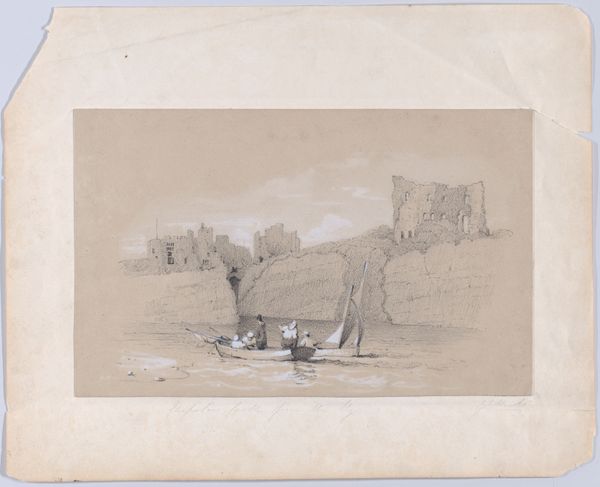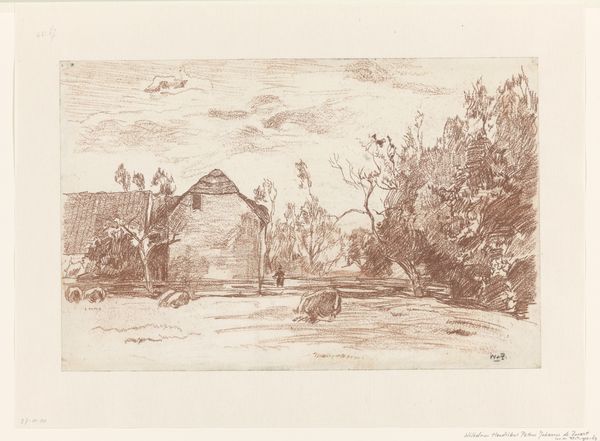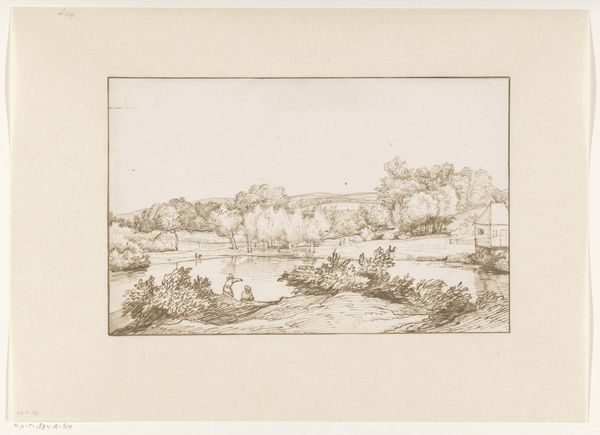
drawing, paper, ink
#
drawing
#
landscape
#
paper
#
ink
#
cityscape
#
genre-painting
#
watercolor
#
realism
Dimensions: height 137 mm, width 80 mm
Copyright: Rijks Museum: Open Domain
Curator: Here we have an ink and paper drawing called "Ex libris van Anton Siebert," dating roughly from 1874 to 1928. Editor: My first impression is that it's beautifully muted. The composition emphasizes a grand, arched bridge, but there's also a delicate, almost melancholic stillness. Curator: Note how the artist uses a limited palette of neutral tones to construct depth. The layering of faint washes of ink generates areas of both light and shadow, implying a tangible three-dimensional space on a flat plane. Editor: And isn’t that bridge fascinating? It appears sturdy, civic even. But also framing or containing images of work, of vessels moving below it. The contrast reminds us of movement through life and time itself. Curator: Indeed. Beyond the visual and textural elements, consider how the composition subtly directs the eye, initially upwards along the imposing structure, and then down to where the smaller, organic forms fill the waterway underneath. The figures are diminutive and the tonal values darker there—yet that activity is the drawing’s real focal point. Editor: Perhaps it’s also suggestive of crossing thresholds—transitions or voyages from one state to another, visually supported by the symbols of passage like boats and bridges? The light in the arches appears like portals. Curator: A convincing analysis! Certainly, those repeated arched openings introduce rhythm, while they simultaneously offer shadowed glimpses into undefined, almost liminal, realms. Editor: All elements work together to evoke the feel of time suspended, an in-between moment… a pause within activity, really. Curator: Very astute. Paying attention to such visual relationships highlights how the artist uses both structural design and symbolic representation to communicate with such poignancy. Editor: Exactly. Recognizing those interconnected dimensions has reshaped my appreciation, drawing out nuances I hadn't noticed initially.
Comments
No comments
Be the first to comment and join the conversation on the ultimate creative platform.
